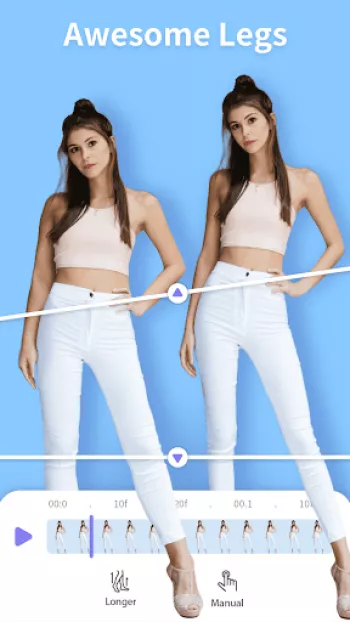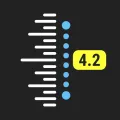Apps Home

The Historical Evolution of the Accordion
The accordion, a symbol of musical diversity and cultural fusion, has a rich and varied history. This instrument, often associated with folk music but versatile enough to appear in genres like jazz, classical, and even rock, offers a unique timbre that is both captivating and emotive. The accordion's journey began in the early 19th century when Christian Friedrich Ludwig Buschmann invented an early version called the Handäoline in Berlin. This was followed by the iconic design by Cyrill Demian in 1829 in Vienna, granting the accordion its status as a novel and portable musical instrument. This initial design featured multiple reeds that activated by air flow when the bellows were compressed or expanded, allowing the instrument to produce harmonious sounds with minimal effort. As its popularity surged, several modifications and variations were introduced to meet the musical needs of different cultures. The diatonic button accordion, popular in folk music, contrasts with the chromatic accordion used in classical compositions, each serving its context with tailored nuances. The Russian bayan, the British concertina, and the Argentine bandoneón each brought unique adaptations, reflecting the instrument's versatility. As globalization increased, so did the accordion's influence, finding a home in world music stages from South America's lively tango and norteño to Eastern Europe's folk revivals. The evolution of materials used in accordion manufacturing, such as wood, plastic, and metal, along with innovations like electronic accordions, highlights the continuous adaptation of this timeless instrument. Today, the accordion continues to innovate, with musicians and manufacturers constantly exploring new sounds and features to blend with contemporary musical landscapes while retaining its traditional charm.
Understanding the Mechanics of Accordion Sound Production
The magic of accordion sound production lies in its intricate mechanics and the seamless interplay between its components. At the heart of this process is the bellows, an expanding and contracting chamber that directs air through precision-tuned reeds. When a player pulls or pushes the bellows, air is forced through these reeds, which are finely crafted from metal strips and mounted over slots in the reed block. Each reed vibrates at a precise frequency to produce a specific pitch. This system allows for continuous and varied sound production, akin to a human voice with its breath and modulation. The keyboard or button board on either side of the accordion serves as the control center, allowing the musician to determine which reeds receive air. On one side, the treble or keyboard side, melodeon buttons or piano-style keys allow for melody and harmony in multiple octaves. The opposite side, known as the bass or button side, typically features an arrangement for bass notes and pre-set chords, making it possible for solo performers to create full-sounding music with simultaneous harmonic and melodic functions. This multi-functionality is further enhanced by stops and switches that adjust the range and tone, altering the timbre by engaging additional sets of reeds or changing the airflow path. The accordion's layout and design, coupled with skilled manipulation of the bellows and keys, allow for an expressive performance capable of dynamic contrast and intricate phrasing. Furthermore, the introduction of midi-compatible and electronic accordions has expanded these mechanical principles into digital realms, offering a broader spectrum of sounds and the integration of modern electronic enhancements into traditional acoustic setups.
The Cultural Impact of the Accordion Across Different Genres
The accordion's cultural significance is profound and diverse, transcending geographical and musical boundaries to become a staple in an array of musical genres. In the realm of folk music, the accordion is a beloved mainstay, its expressive capabilities making it an ideal companion for traditional melodies passed through generations. It is the driving force behind the lively jigs and reels of Irish music, where its rhythmic and melodic contributions invigorate gatherings. Across the Atlantic, the accordion fuels the energy of Cajun and zydeco music in Louisiana, imbuing the music with soul and heritage. In Latin America, the accordion is fundamental to vallenato and norteño, genres that narrate everyday life stories with poignant melodies. Its presence in tango, particularly through the bandoneón variation, adds a hauntingly beautiful voice to the dance-driven compositions of Argentina. The accordion's influence is equally notable in European classical music, where composers such as Astor Piazzolla transformed its role from folk to a respected concert instrument while retaining the passionate essence of its roots. Jazz musicians have also embraced the accordion, incorporating its unique sound into improvisations and big band arrangements. With the advent of global fusion, accordionists are exploring new territories by integrating the instrument into rock, pop, and even electronic music, highlighting its versatility and relevance in modern soundscapes. The accordion's global reach and adaptability make it a powerful cultural symbol, breaking barriers and uniting listeners through its universal language of melodies. This cultural omnipresence is evident at international music festivals and in the works of contemporary composers and musicians who continually celebrate and reinvent its sound to suit the evolving tastes of the modern world.
Technological Advancements in Accordion Design and Utility
The accordion has not remained untouched by technological advancements, evolving alongside them to incorporate new materials, designs, and functionalities that enhance its musical utility and player experience. Modern accordion construction benefits from the integration of lightweight materials like carbon fiber and digital electronics, allowing for the creation of instruments that are both durable and versatile. One of the most significant technological developments is the advent of electronic and digital accordions, which offer the rich acoustic sound of traditional models while providing the advantages of digital connectivity and sound manipulation. These instruments often feature headphone jacks, MIDI outputs, and a plethora of sound samples, making them suitable for a vast array of performance and recording environments. Such advancements allow accordionists to interface with digital audio workstations, enabling complex arrangements and sound layering previously unattainable through acoustic means alone. Moreover, the introduction of MIDI compatibility has opened avenues for accordionists to produce diverse musical genres and collaborate with electronic music producers. Innovations in bellows pressure sensors and keyboard feedback systems also provide enhanced control and responsiveness, catering to nuanced playing styles and more intricate musical expressions. These innovations are supported by ergonomic designs aimed at reducing player fatigue and improving portability, addressing the practical needs of musicians who perform frequently or on the go. Additionally, custom tuning systems and precision manufacturing technology allow for finely tuned reeds that offer more consistent performance and precise intonation. The continually expanding capabilities of the accordion not only offer greater artistic freedom for performers but also broaden its appeal, encouraging a new generation of musicians to explore and master this timeless instrument.
Discovering Accordion Resources and Applications
For aspiring accordionists and seasoned players alike, accessing resources and applications tailored to the instrument can significantly enhance learning and performance experiences. Online platforms offer a myriad of educational resources, from instructional videos and virtual lessons to digital sheet music libraries covering a wide range of genres. Mobile applications dedicated to the accordion provide practical tools such as tempo trainers, metronomes, and chord charts that aid practice and performance. Moreover, applications like PrettyUp go beyond traditional learning resources, offering video editing tools that enable musicians to create engaging multimedia content. With features like face tuning and body reshaping, users can enhance visual appeal without needing expertise in image or video editing, sharing performances on social media with a polished look. For performance pieces, the integration of filters and effects can add a creative visual layer, aligning with vibrant accordion sounds. Aspiring performers can Download for Android to access a world of interactive features that support both artistic and technical development. Such tools democratize music-making, empowering individuals to refine their skills and share their passion for the accordion with global audiences. Community forums and social networks dedicated to accordion music provide platforms for discussion and collaboration, fostering a supportive environment for skill-sharing and innovation. Workshops, masterclasses, and music festivals offer opportunities for personal growth and exposure to diverse accordion styles, techniques, and influences. By leveraging these resources, individuals can embark on a fulfilling journey of musical exploration, contributing to the vibrant and ever-evolving community of accordion enthusiasts worldwide.
Share Your Opinion
Your Email Will Not Be Published.
All Rights Reserved © Apps Home 2025
































Amie robl
Love this. I couldn't find ANY other app that you can fix or enhance your body AND face (plus all the extra features like tattoos, abs..ect) on not...
Adrien Mitchell
A very powerful and useful app for editing photos and videos. It sometimes gets confused in videos if the subject is moving around a lot and changi...
Raven_
I like the old 2000s vibe filter camera feature out of all overall I'm just happy with the amount of editing features
Jennifer Pate
This is one of the most amazing photo editor apps I've seen, and as for the body editor, you can't get much better! Although I have no doubt the pa...
John Manuel Jacinto
Good with this app, especially its feature AI Expansion, downside tho it isnt flexible in the free subscription. Definitely making needs free 😌